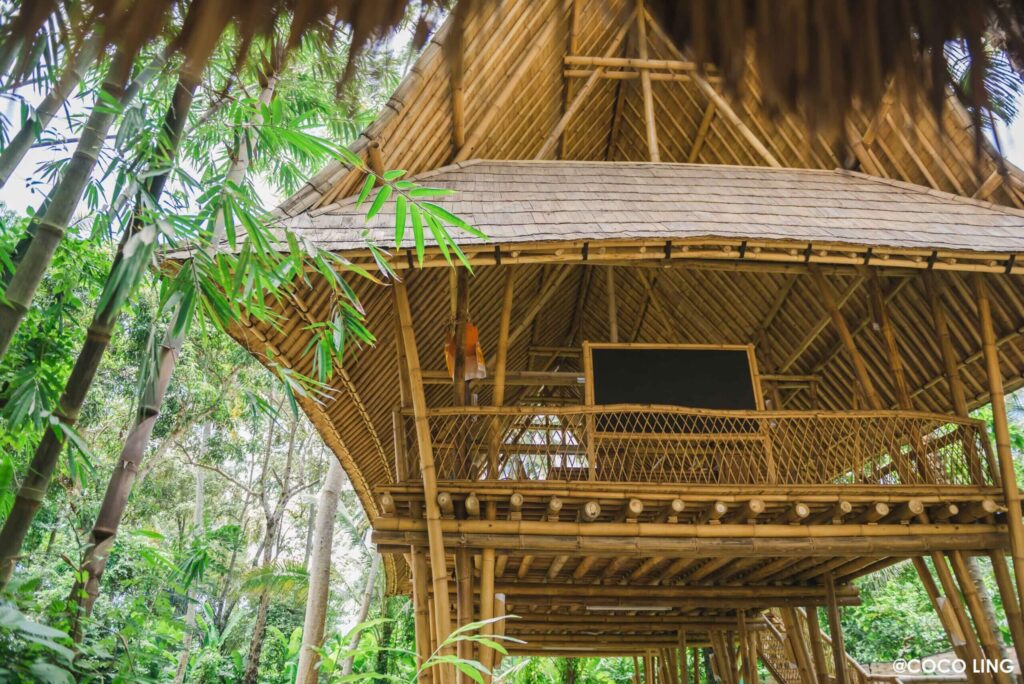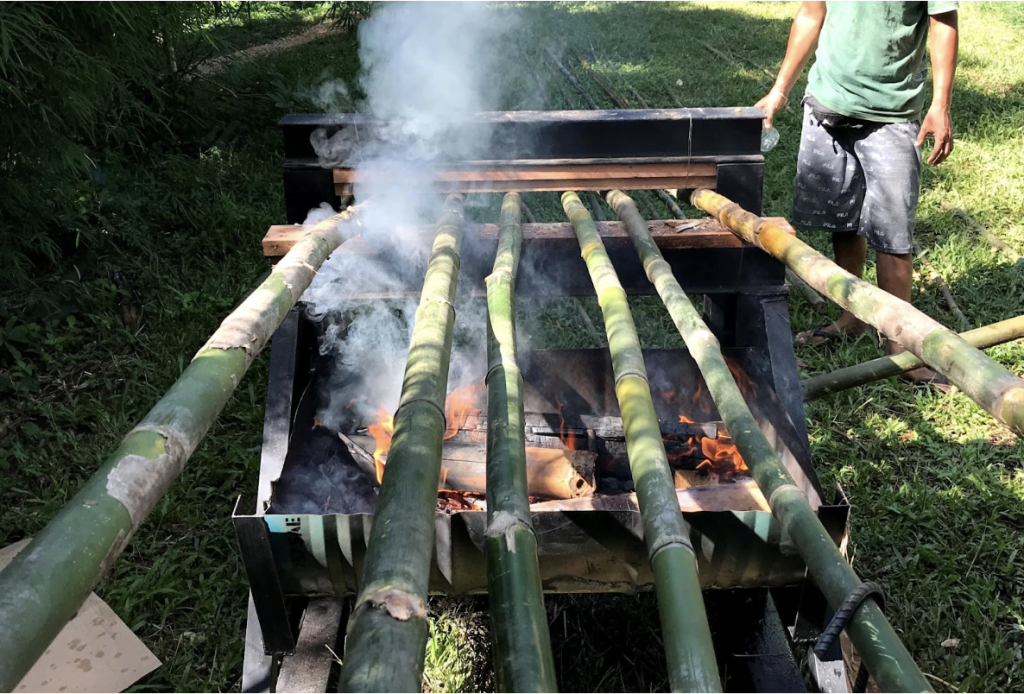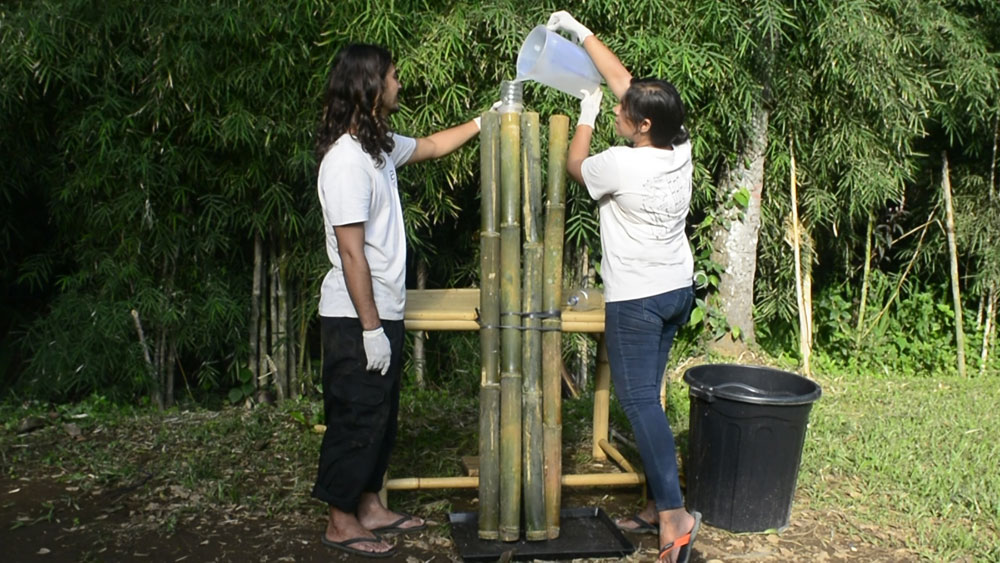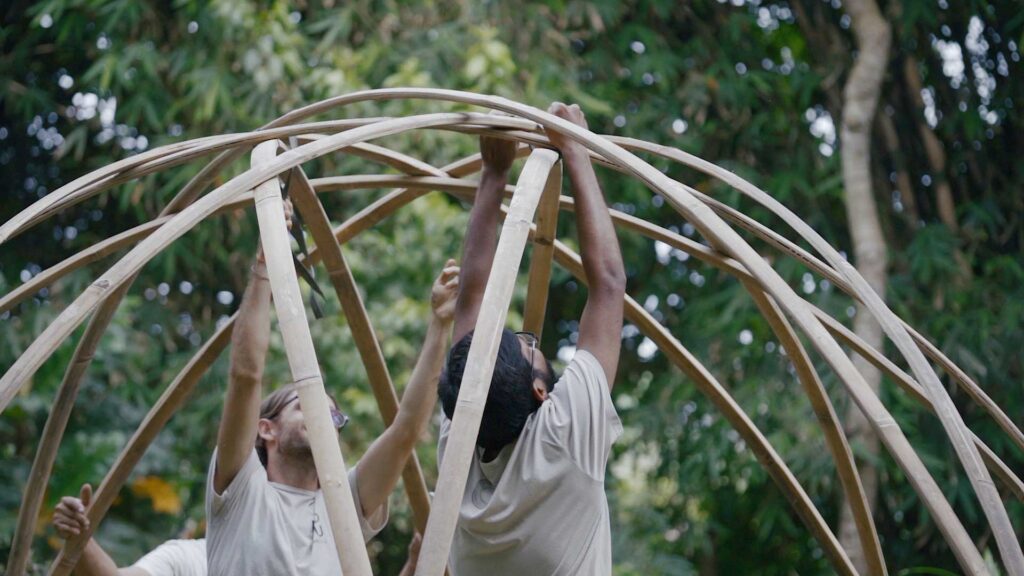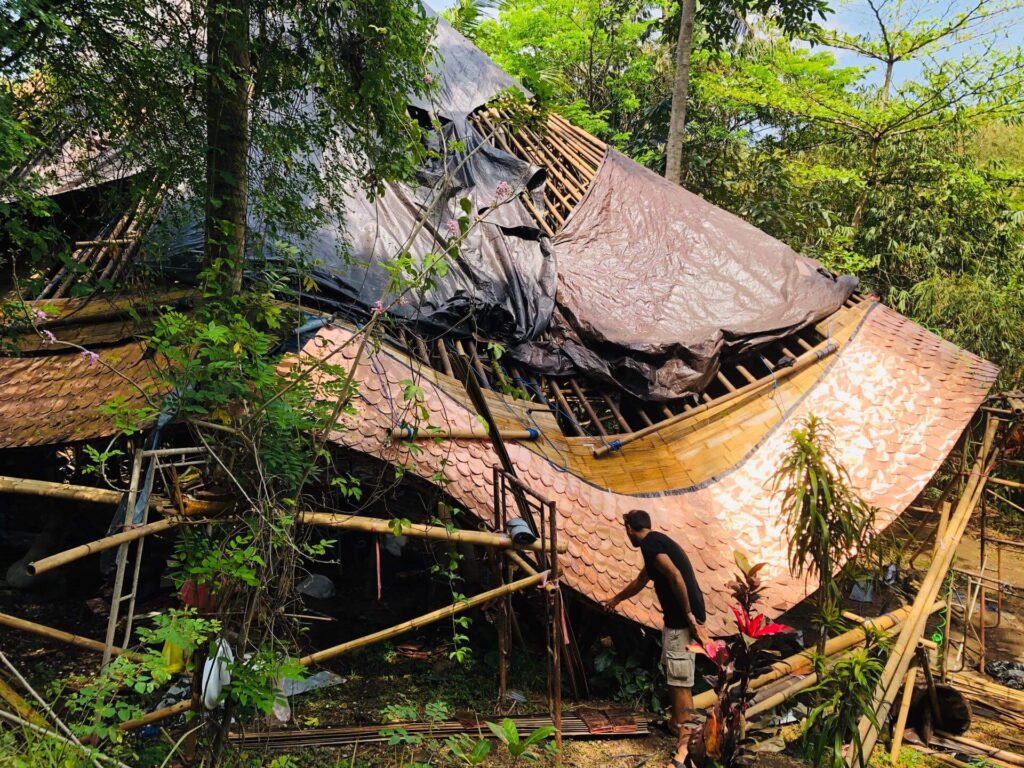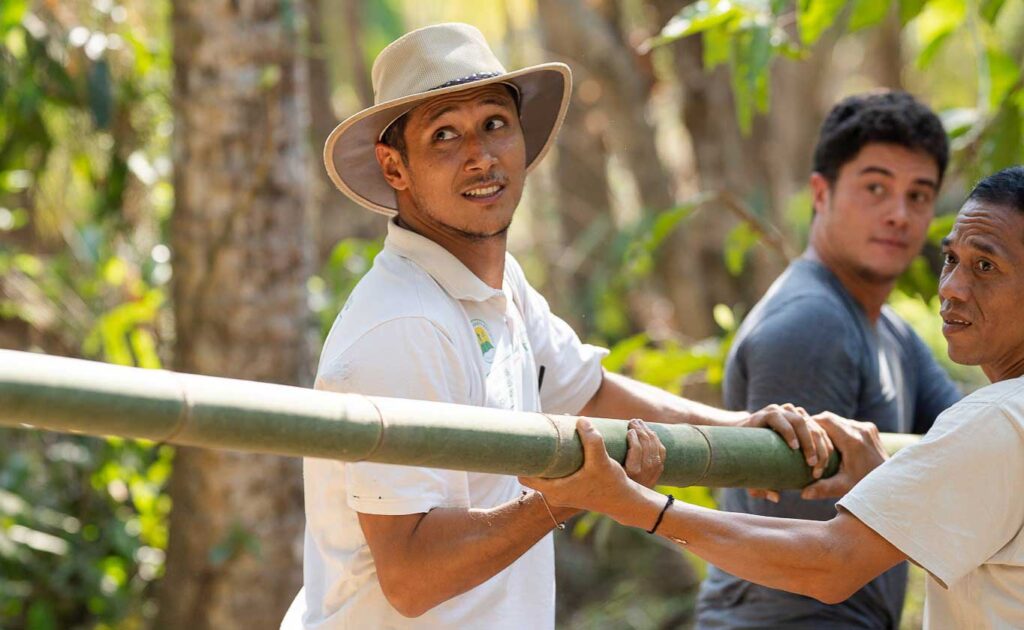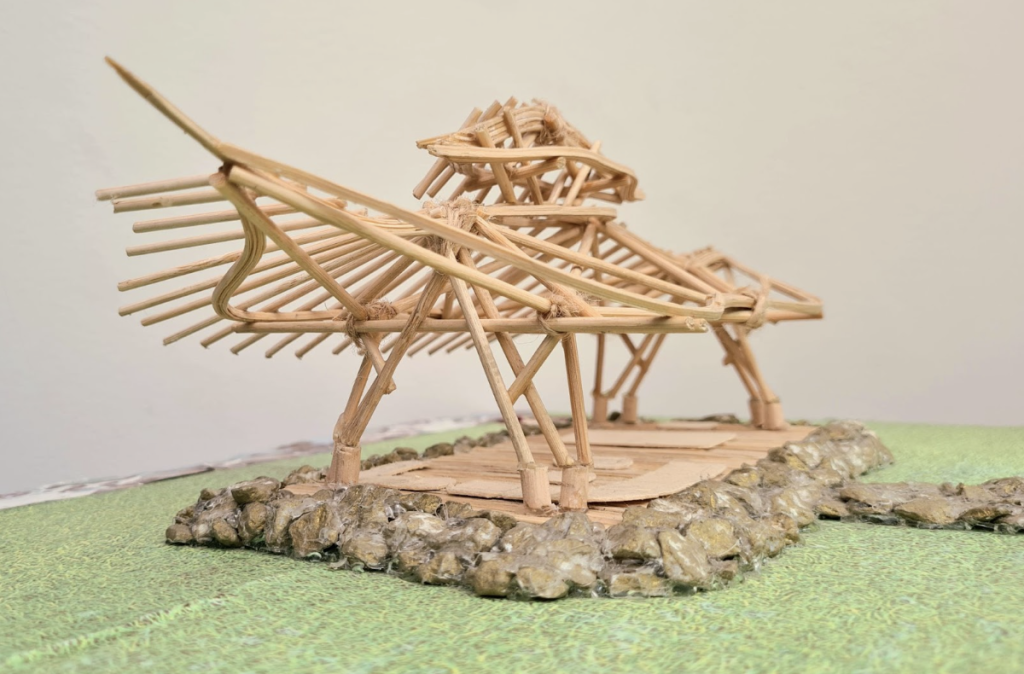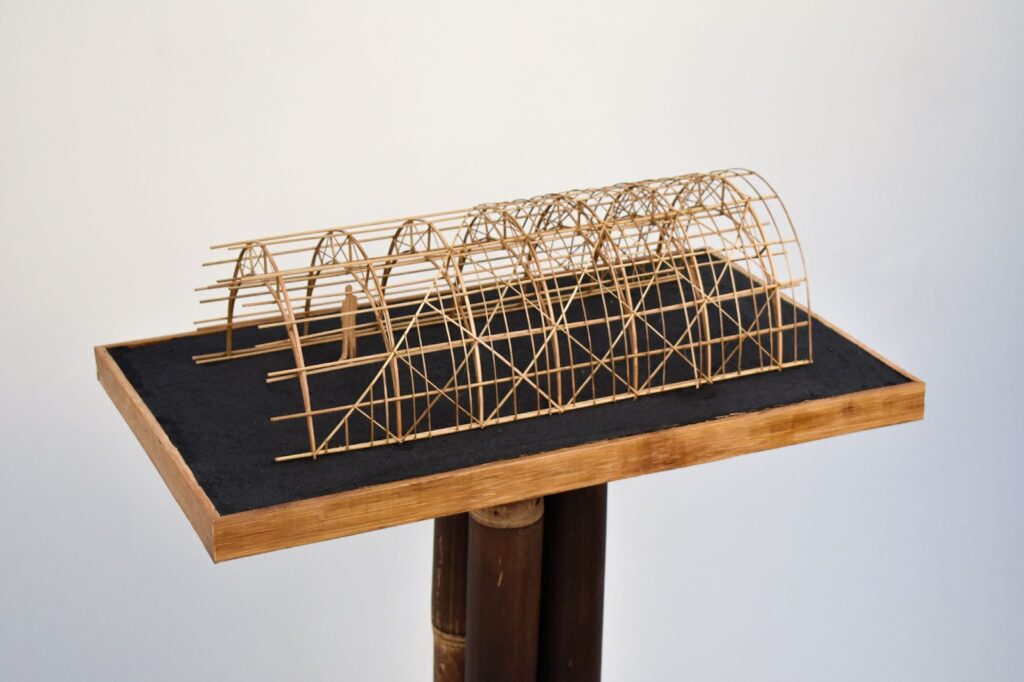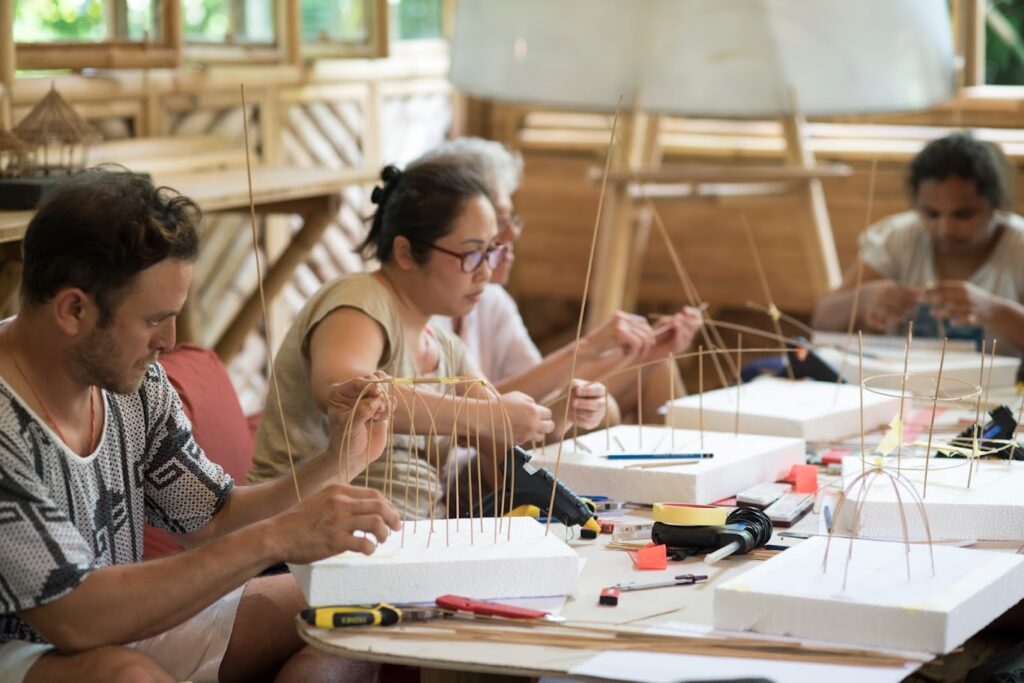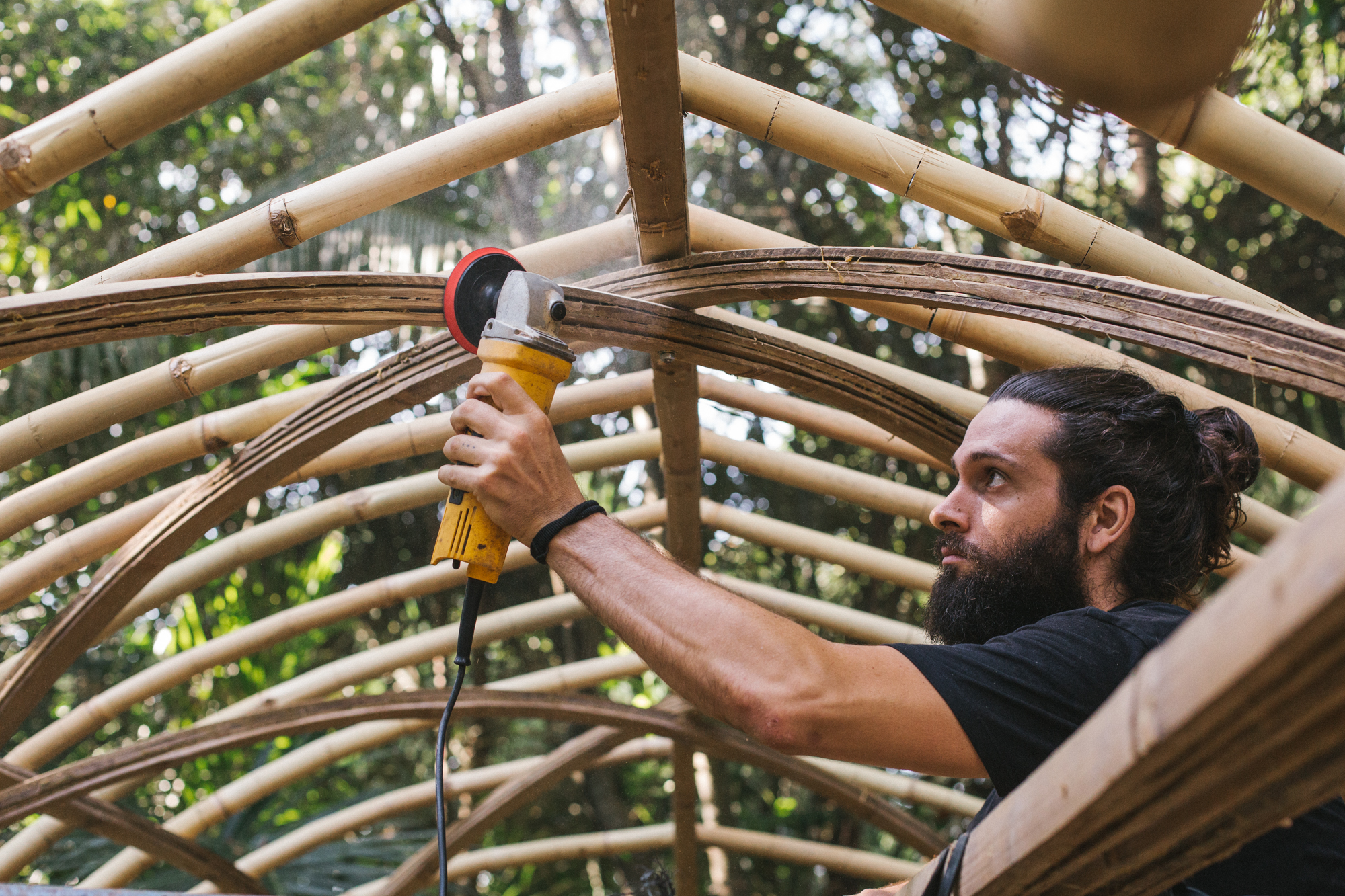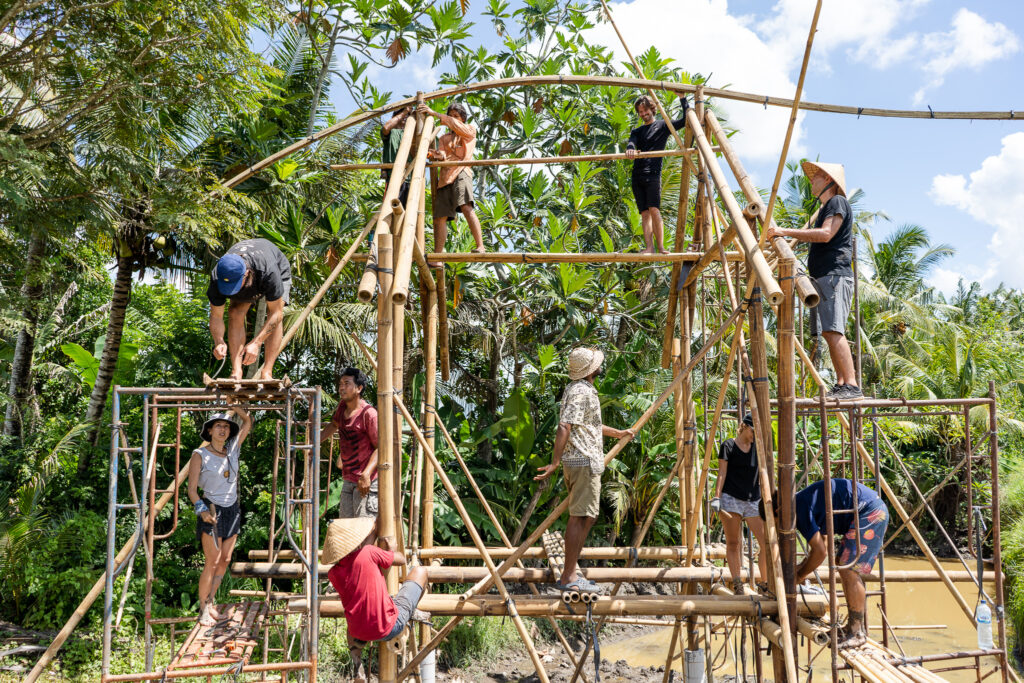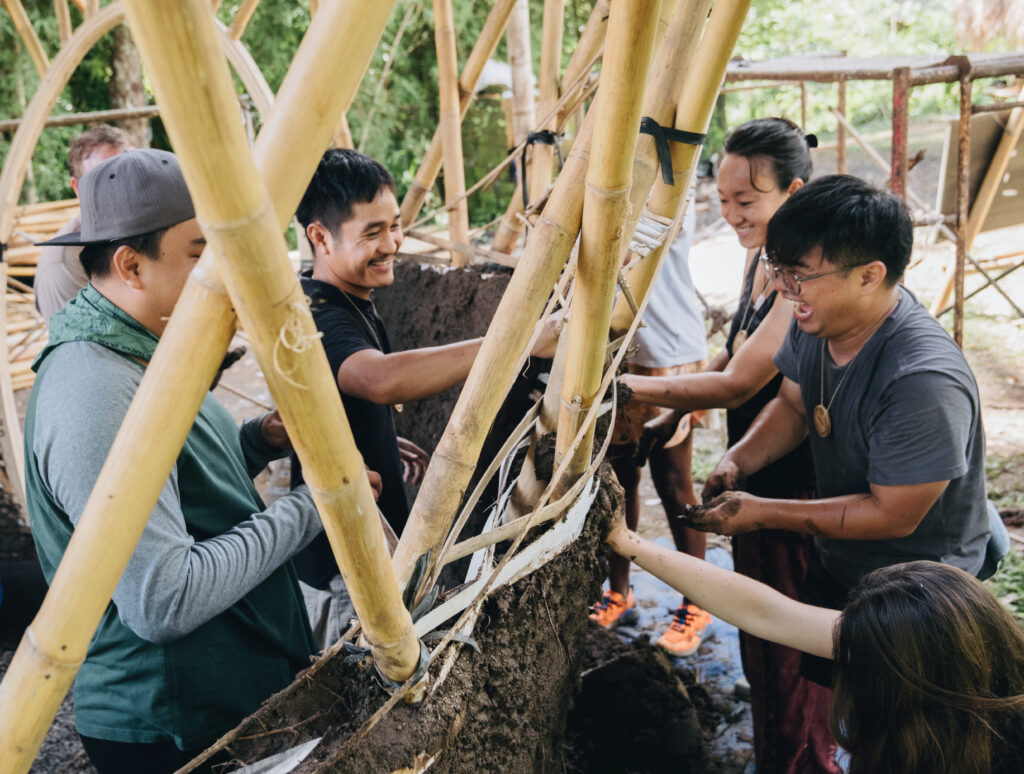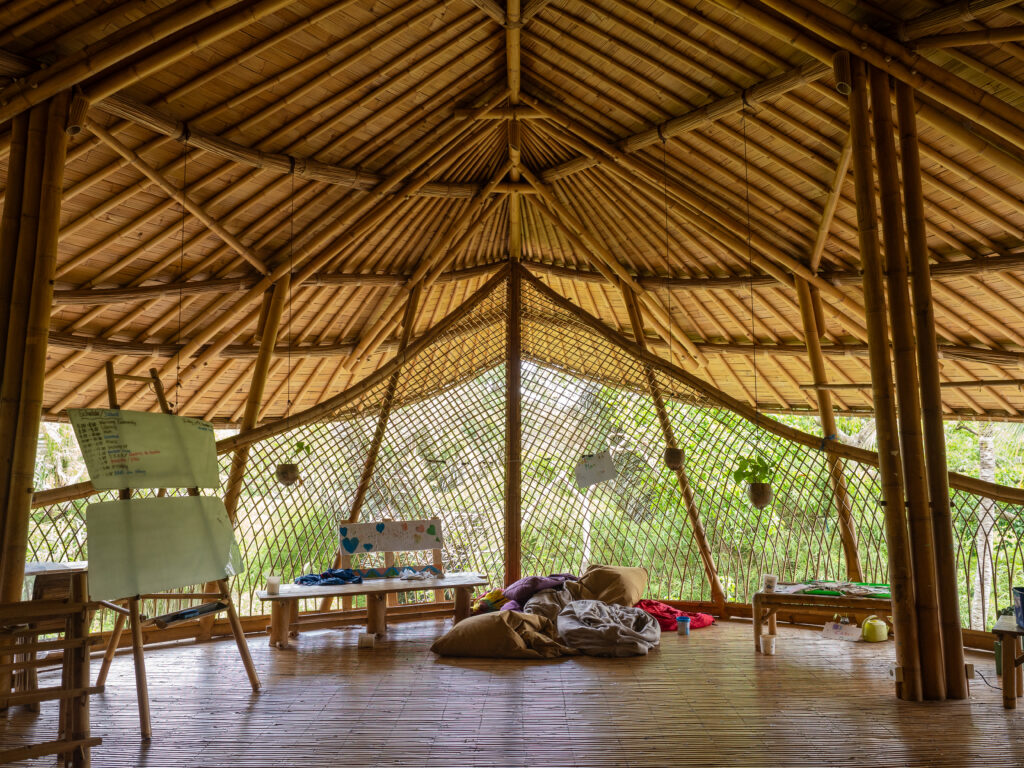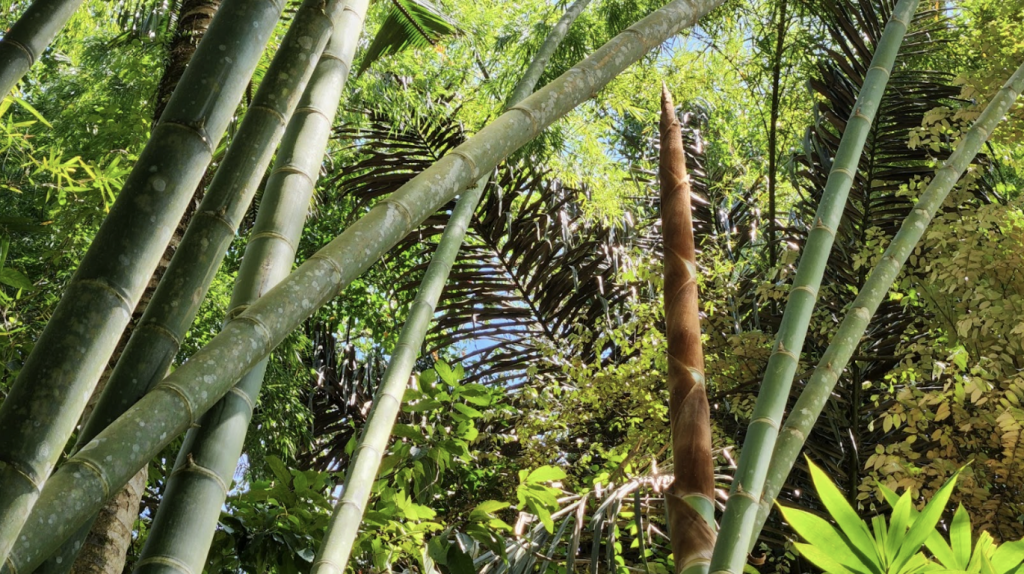Unique, Sustainable Architecture: Exploring Vernacular Bamboo Structures Around The World
By Leticia Matos Asilis | August 3, 2022 | Construction -
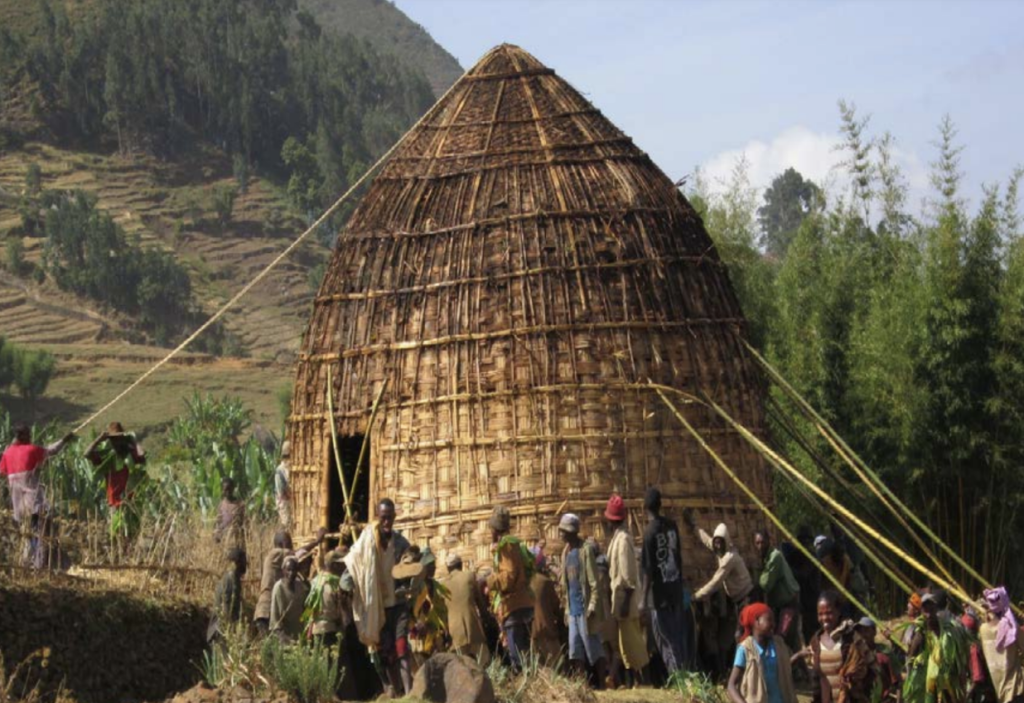
Discover the different cultures around the world that used bamboo for their traditional structures.
Vernacular Architecture is a way of expression in which each culture manifests its traditions and history through local structures adapted to the environment and its climatic conditions. This architecture involves craftsmanship and patterns of expression. It has undergone a process of evolution that has had repercussions to modern day architecture and for this reason it is defined as an architecture filled with identity and continuity.
Bamboo is an ancient building material and has undoubtedly played a vital role in vernacular architecture. Thanks to its mechanical properties, versatility, economic accessibility, flexibility and rapid growth, bamboo has always been the perfect instrument to build lightweight and strong structures with locally available material.
Vernacular bamboo structures are found mainly in tropical and subtropical areas. This article will break down different vernacular bamboo structures in 4 continents throughout the world: South America, North America, Africa and Asia.
- Taironas and Muiscas, Colombia
- Mayans, México
- Kunas, Panamá
- Gamo Society, Ethiopia
- Sumbese, Indonesia
- Lumad tribes, The Philippines
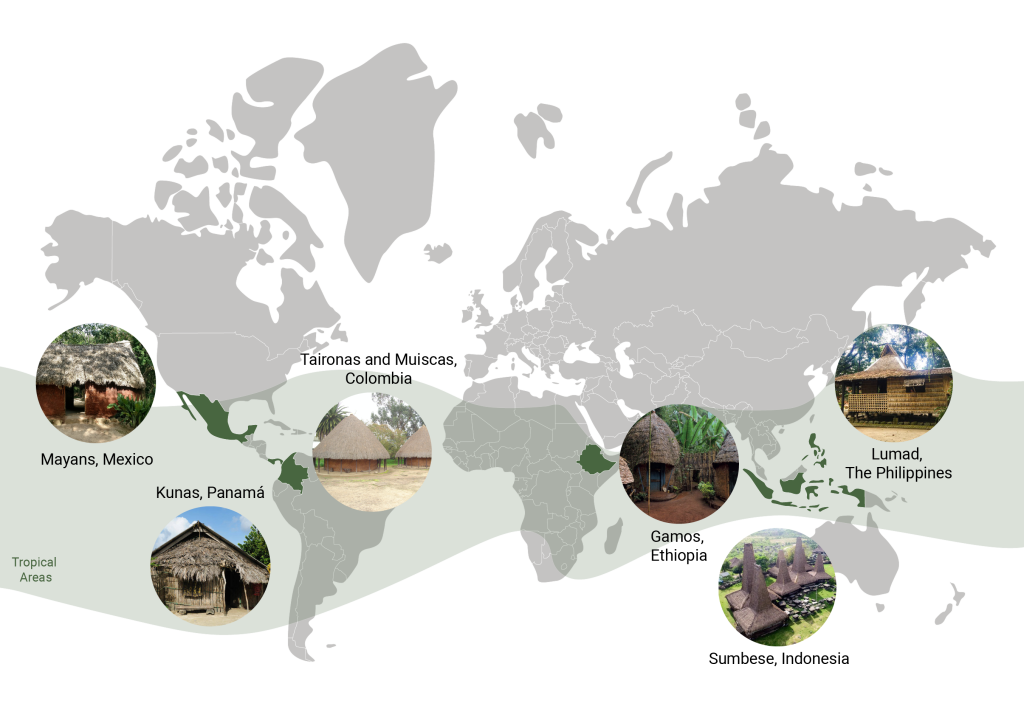
Taironas and Muiscas, Colombia
Bohios or malocas are traditional rectangular or circular structures. They used materials such as wood, straw, palm, and bamboo for the walls. In cold climates, the perimeter walls have a little opening as they are draped with a mixture of sand, cattle manure, and other clay materials. In warm climates, bamboo walls are more permeable and exposed poles are left uncovered. Later on, Colombia is exposed to construction techniques that can bear highly seismic conditions, such as the traditional and resistant walls of Bahareque where bamboo was valued as a structural element and not decorative.
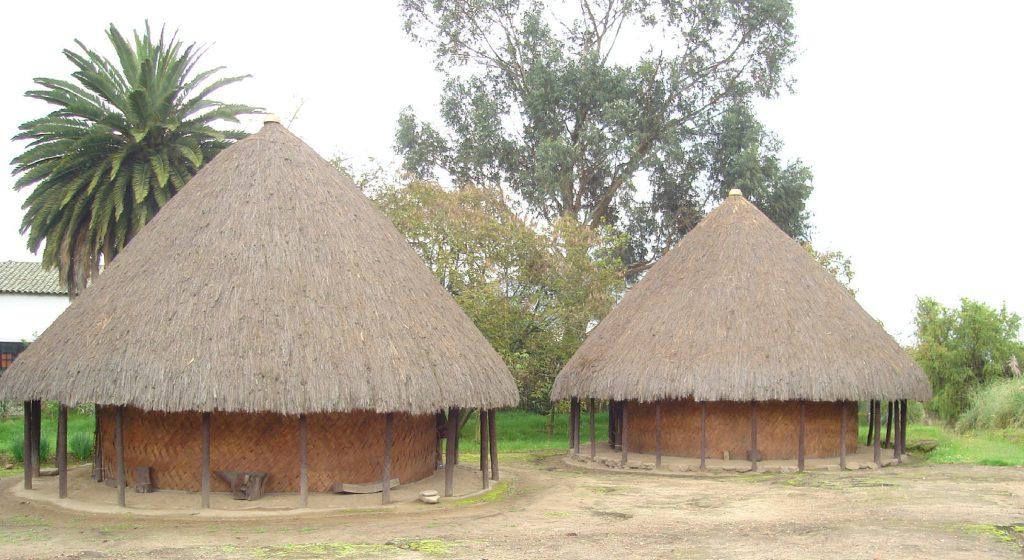
Mayans, México
Traditional Mayan structures involve materials such as wood, bejuco, mud, huano (palm leaves), earth, and walls of bahareque with bamboo. It was vital to know these constructive systems based on practice and the tradition of family work. Always taking into account aspects such as the shape, housing structure, and relation with the land, and surrounding habitat, this constructive system allows the stability of the house where the bahareque walls with bamboo have the function of division and protection, not of structural support.
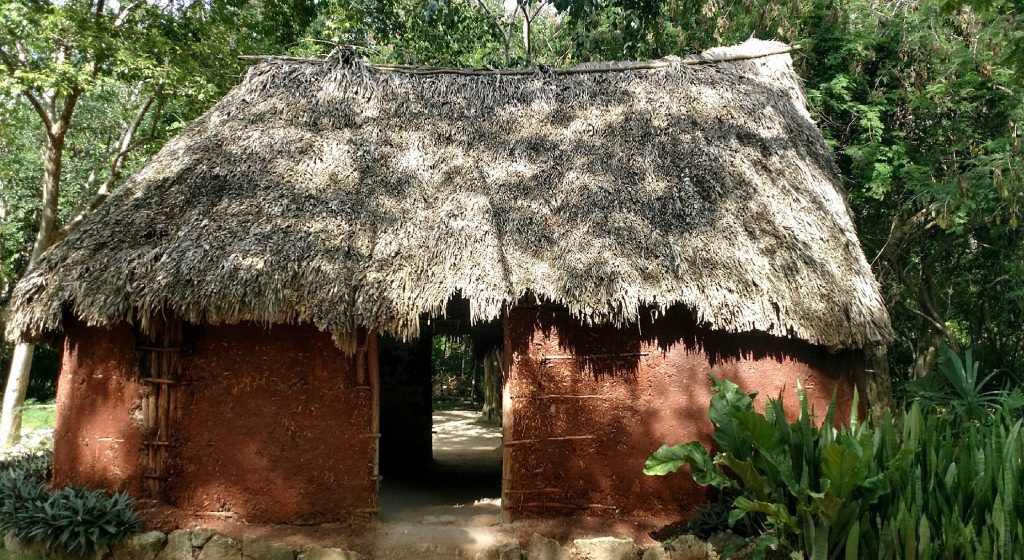
Kunas, Panamá
Kunas used tiled roofs and roofs with vegetable materials that offered an immediate natural environment. Bamboo is considered an excellent thermal insulator for tropical heat. For its lightweight, it is used in the form of splits as a structural skeleton to form quincha walls. Bamboo splits are also used perpendicular to the roof straps, mainly to support the tiles.
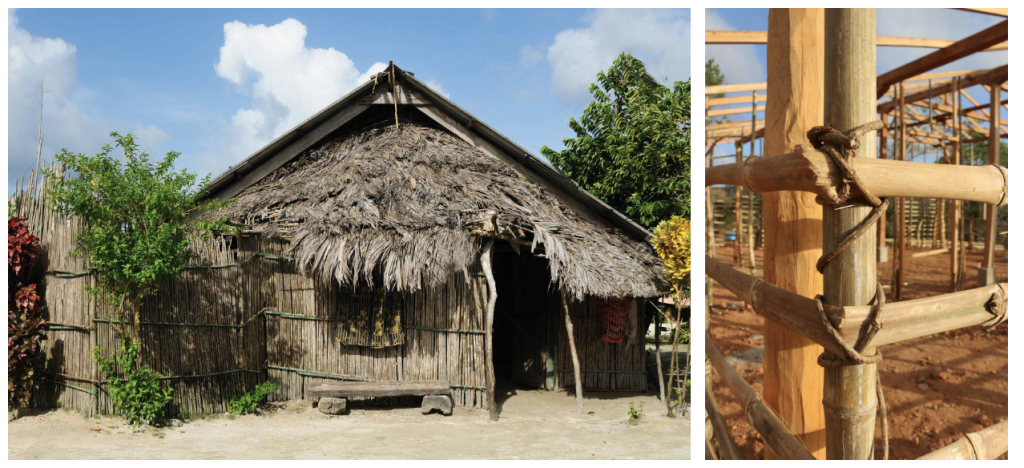
Gamo Society, Ethiopia
Ethiopia has been using bamboo for over 1000 years. The Gamo and Dorze communities used bamboo for their cultural houses: “Waje, Yare, and Kaara”. They vary in shape, size, the material used, and method of construction. They use different materials such as bamboo, barley, wheat steam, grass, and wood. But the most important one is bamboo since they use it as a structural material for roofing and its stem cover for roof covering. They also use bamboo as a wall layer called “Loshe”, as a shingle form to strengthen the structures.
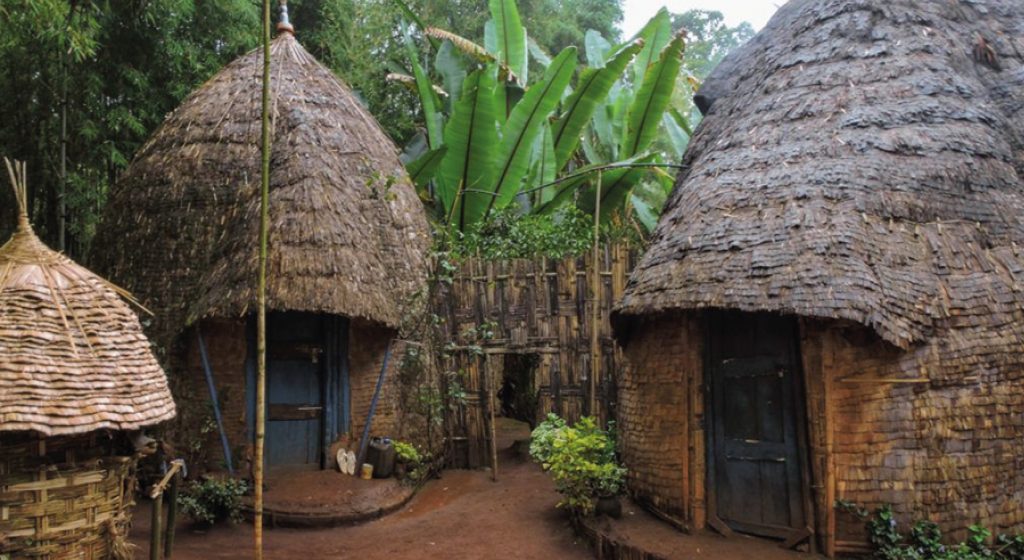
Check out this amazing video of the Dorze community making their bamboo houses.
Sumbese, Indonesia
The Sumbanese House is characterized by its high-pitched central peak in its roof and secure connection with the spirits or “marapu”. Is mostly a timber and bamboo construction, bamboo being more used on the western side of Sumba Island than on the east. Walls are made from panels of plaited bamboo or woven coconut leaf. The roof is made of a dense thatch of alang-alang grass, tied with coconut leaf to battens made from saplings. Whole bamboo culms constitute the floor.
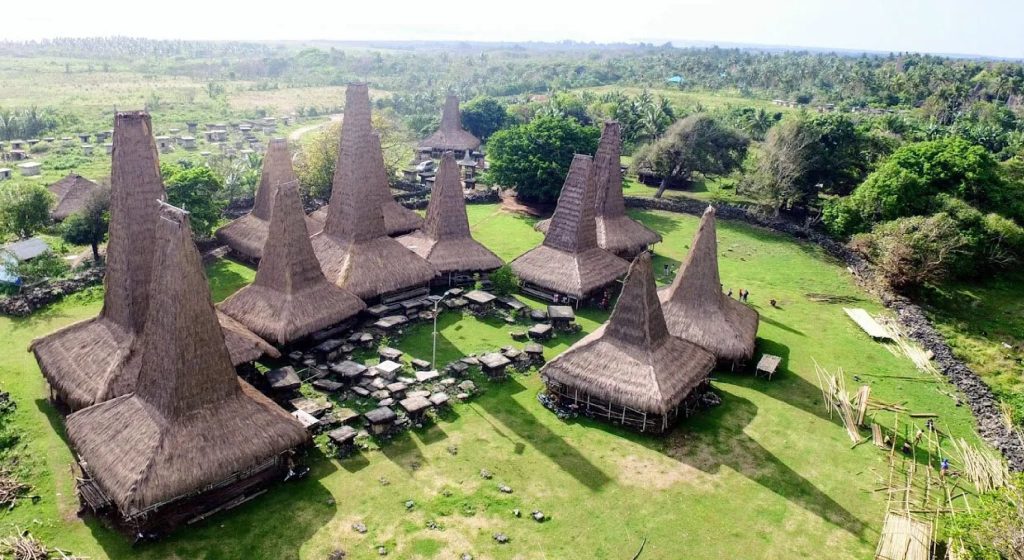
Lumad tribes, The Philippines
The Bahay Kubo is a traditional house in the Philippines and represents an icon of its culture. As its name suggests, is square/rectangular in form and it is traditionally a lightweight and pliant structure made of wood and bamboo, palm fronds, grass, and raised on stilts. This simple and lightweight construction uses local materials that facilitate the Bahay Kubo’s easy reconstruction and repair following earthquakes, typhoons, or floods. It will often have bamboo slat floors which allow cool air to flow into the living space and the walls are always of light material such as wood, bamboo rods, or bamboo mats called “Amakan”.
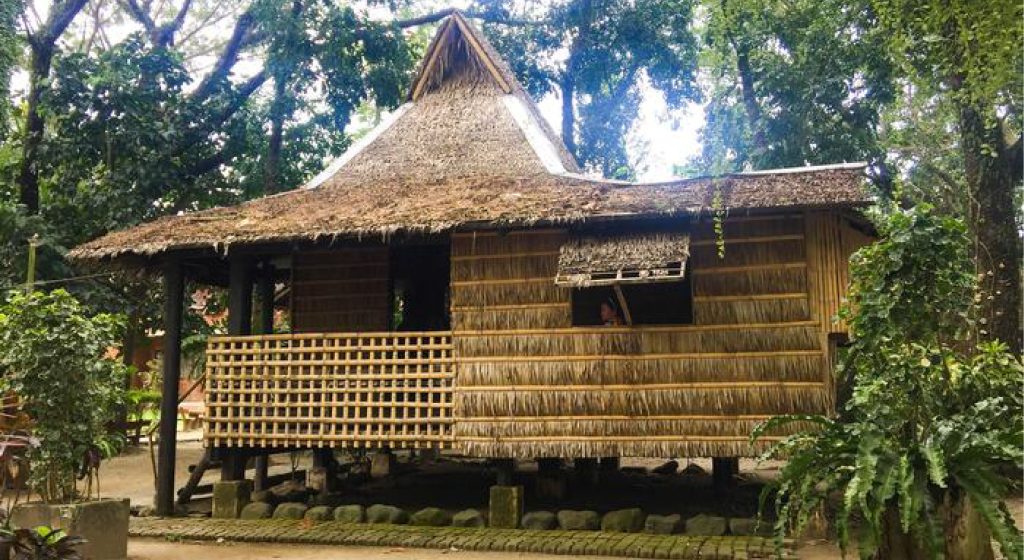
We could list many other vernacular bamboo structures around the world such as Bangladesh houses, Thai houses, Assam, Zawlbuk, and Bhunga houses in India, Hong Kong's famous bamboo theaters, and Tulou giant houses in China. We might even cover these structures in a future article!
It is important to know the legacy that these cultures have left around the world as their construction techniques with bamboo impact on our present practices. Many times it is not about learning but remembering the methods that our ancestors used for thousands of years.
Sources
Featured image: Yara/ Shocha/ Qotha type of Ethiopian house skeleton. Ethiopia. Image Source: American Scientific Research Journal for Engineering, Technology, and Sciences (ASRJETS) (2013) Volume 3, No 1, pp 1-29
López, L. (Director). (n.d.). Bamboo as a structural material, basis for safe bamboo constructions [Video file]. Retrieved July 2022, from https://online.bamboou.com
DeWolf | Published in CLADmag 2016 issue 1, C. (2022). Materials: A look at some beautiful bamboo buildings. Retrieved July, 2022, from https://www.cladglobal.com/architecture_design_features?codeid=30649
Khan, M. (2022, January 24). Use of bamboo in vernacular architecture - RTF: Rethinking the future. Retrieved July, 2022, from https://www.re-thinkingthefuture.com/rtf-fresh-perspectives/a916-use-of-bamboo-in-vernacular-architecture/
Grupal, G. (2020, August 21). Vivienda de Quincha y bambu. Retrieved June, 2022, from https://issuu.com/grupal/docs/vivienda_de_quincha_y_bambu
Mora Saucedo, J. (2022). Portal digital library - INTERAMER - educoas.org. Retrieved June, 2022, from http://educoas.org/Portal/bdigital/contenido/interamer/interamer_48/Sau_Cp3.aspx?culture=en&childindex=39
Martin Díaz, N. (2016). Arquitectura tradicional colombiana como sistema de ... - m.riunet.upv.es. Retrieved June, 2022, from https://m.riunet.upv.es/bitstream/handle/10251/86235/MARTIN%20
Barile, K., & Mehrabani, Y. (2021, June 12). Building our Casa de Quincha Mud Home in one day. Retrieved June, 2022, from https://www.turiyapanama.com/casa-de-quincha-cob-house/
Pandey, L. (2021, October 27). Vernacular architecture: Ethiopia. Retrieved June, 2022, from:https://www.re-thinkingthefuture.com/architectural-styles/a5691-vernacular-architecture-ethiopia/
American Scientific Research Journal for Engineering, Technology, and Sciences (ASRJETS). (2013). Gamo Society Vernacular house Typologies and their science ... - core. Retrieved June, 2022, from https://core.ac.uk/download/pdf/235049595.pdf
Darge Dalbiso, A., & Addissie, D. (2016). Ethiopian vernacular bamboo architecture and its ... - claisse.info. Retrieved June, 2022, from http://www.claisse.info/2019%20papers/5040.pdf
ArchEyes, T. (2020, August 11). Sumbanese traditional houses in Indonesia / vernacular architecture. Retrieved June, 2022, from https://archeyes.com/sumbanese-traditional-houses-in-indonesia-vernacular-architecture/
Antonio, S. (2016, September). Lean interpretations from Philippine Vernacular Architecture. Retrieved June, 2022, from https://leanurbanism.org/lean-interpretations-from-philippine-vernacular-architecture/
Berkeley, C. (2022). The Reserve: Archive of top-reviewed essays: Berkeley prize essay competition. Retrieved June, 2022, from http://www.berkeleyprize.org/endowment/the-reserve?id=3160
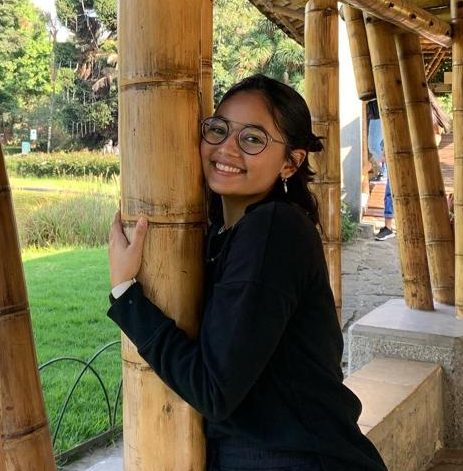
Leticia is an architect based in the Dominican Republic. She has always been passionate about the fusion of architecture and nature to create the perfect balance between organic spaces and modern requirements.
OCTOBER 10-21, 2025
The 11 Day Bamboo Build & Design Course in Bali
In 11 days, we'll show you how to build bamboo structures we’ll share all that it takes to build with nature.
Start Anytime
The Bamboo Harvesting Course
The Bamboo Harvesting Course is an online step-by-step training to harvest and care for your bamboo clumps to ensure their longevity and productivity. This maximizes the potential of this beautiful grass as a rapidly renewable resource.Whether you are an architect, builder, or sustainability enthusiast, this mini course will enable you to utilize this rapidly regenerative resource as a durable construction material.It will help remove any fear or doubt about the durability of bamboo and help you build reputable bamboo structures that stand the test of time!

